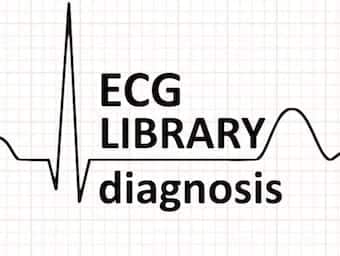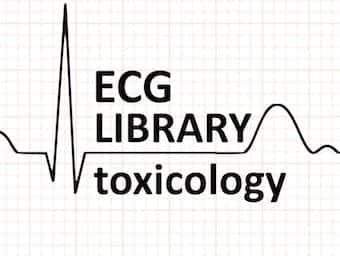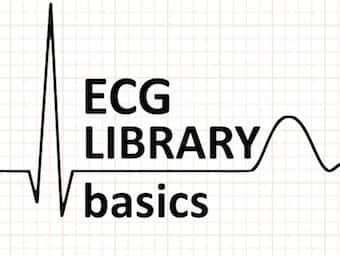
Accelerated Idioventricular Rhythm (AIVR)
AIVR -- benign rhythm that occurs when rate of an ectopic ventricular pacemaker exceeds sinus node. Often seen in reperfusion phase following anterior STEMI

AIVR -- benign rhythm that occurs when rate of an ectopic ventricular pacemaker exceeds sinus node. Often seen in reperfusion phase following anterior STEMI

ST elevation primarily localised to leads I and aVL, usually associated with reciprocal ST depression and T wave inversion in inferior leads

Brugada Syndrome - ECG abnormality with a high incidence of sudden death in patients with structurally normal hearts. Brugada - EKG Library

A classic toxicological ECG demonstrating the key electrophysiological changes seen with quetiapine overdose.

ECG features of Upper Limb Lead reversal - left arm/right arm lead reversal. Einthoven's triangle flips 180 degrees horizontally around an axis formed by lead aVF.

Definition, mechanism, and clinical significance of ventricular tachycardia (VT). Typical ECG findings with examples of monomorphic VT

Ventricular Flutter. Extreme form of VT with loss of organised electrical activity. Short lived with progression to ventricular fibrillation

A review of the ECG features of inferior STEMI, Inferior ST elevation myocardial infarction LITFL ECG Library

A review of the ECG features seen in TCA overdose, which occur due to a combination of sodium channel blockade and antimuscarinic effects

Sinus rhythm with resting heart rate (HR) > 100 bpm in adults, or above the normal range for age in children

Sinoatrial exit block - failed propagation of pacemaker impulses beyond the SA node with intermittent failed atrial depolarisation (dropped P waves)

Sick Sinus Syndrome. Characterized by abnormal sinus node functioning with resultant bradycardia and cardiac insufficiency.